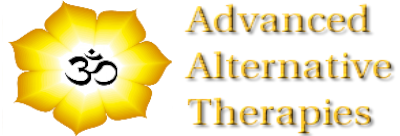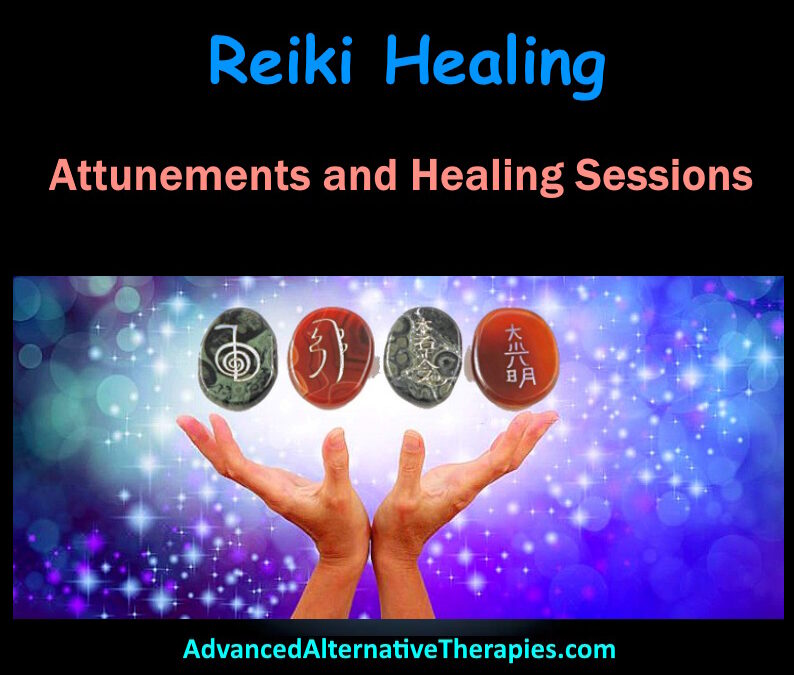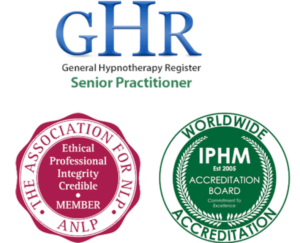What is Reiki Attunement And How Do I Know If It Worked?
Reiki is a non-invasive modality that supports both physical and emotional healing. Through hands-on or distant healing, a practitioner will act as a conduit for the healing energy to flow through their hands to encourage and stimulate a person’s innate powers of self-healing. Through the receiving of reiki, you are assisted to re-establish your own internal control over your energy balance.
It’s believed that reiki energy flows through the practitioner into the client and promotes self-healing. Based on this understanding, reiki healers transfer healing and relaxation energy into your body. Energy healers believe that when it comes to working with energy, time and space do not exist, so you can receive reiki healing both in person and remotely.
The energy delivered into your body improves energy flow and helps to clear blockages. This allows the body to restore balance and heal itself physically, mentally, emotionally and spiritually.
Reiki attunement, also referred to as initiation, is an energetic process that opens up your energy field so you can be a channel for the reiki healing energy.
A Reiki Master gives the attunement – it is not something that you can give yourself. There are different levels of attunement, with each level bringing more understanding on how to develop your own practice alongside the reiki principles, a deeper understanding of the reiki symbols and how best to support others when they are receiving the reiki energy.
Brief History Of Reiki
Reiki is a Japanese technique often used for stress reduction and relaxation that also promotes healing. Mikao Usui developed the technique in the 1920s, in part with the reiki principles that are the basis of his teachings on personal and spiritual growth.
The word “reiki” is a combination of two Japanese words; “rei,” which means universal, and “ki,” which means life energy.
Usui was interested in the spiritual side of life and started to practice meditation. During one of his meditation sessions on Mount Kurama, he had a revelation about the healing energy that surrounds us all. The manifestation was revealed to Usui on the 21st day of penance on the mountain.
Mikao tried the healing on his own body and also on his family members. The effect was the same every time he tried the practice. After realising this, it is believed Usui said to himself:
It is much better to give this power widely to a lot of people in the world and enjoy it among them than to keep it exclusively to my family members.
Usui started to develop a system for sharing this energy with others and called it Reiki. Although founded by Usui, the first actual commercial healing centre was set up in 1933 by Dr. Chujiro Hayashi, a retired naval officer, surgeon, and a student of Usui. However Hawayo Takata is largely credited with bringing reiki to the west.
Takata was a Japanese-American who learned about reiki from Usui’s students in Japan after World War II. She first brought reiki to the US in 1938 and began teaching it. The first level of attunement Takata taught is what is now called the First Degree or Level one attunement.
Becoming A Reiki Teacher
To be able to teach reiki, you need to have reached the teacher/Master level which means being attuned to all three levels, and seek to live your life according to the reiki principles. Many teachers or masters, as part of their mentorship, will recommend an appropriate time between attunements to ensure proper integration, and a certain amount of time dedicated to healing themselves and others. In addition to this, a reiki teacher would need the following qualities.
- Compassionate and caring attitude towards others.
- Patient with people of all levels of understanding.
- Good communication skills.
- Able to convey the reiki principles and philosophy.
- Able to give attunements as enabled by his or her reiki energy.
- Knowledgeable about the history and origins of reiki.
The process of becoming a teacher is not an easy one. It involves undergoing reiki training from a qualified instructor, and passing an assessment.
The first degree of reiki involves exploring reiki energy and bringing it into your daily life and does not qualify you to become a teacher
Complete reiki training can last anywhere from a few weeks to years, depending on the certification level you desire.
There are a number of associations that verify training levels and uphold professional standards, like Reiki Australia. Most reiki institutions provide the following certifications:
- First degree: It emphasises self reiki by practising reiki healing on yourself.
- Second degree: With this certification, you’re able to practise reiki on others.
- Master teacher: Apart from being a reiki teacher, a Reiki Master can attune new reiki practitioners.
There’s no guarantee that a person who has been attuned to reiki will automatically become a good teacher. There are many aspects of reiki to learn and experience before becoming an effective teacher. However, it is possible to teach with the right training, dedication, and qualities.
Why You Need To Master Reiki Principles As A Reiki Teacher
The five principles of reiki are universal truths that all reiki practitioners should live by. They are not just for teachers but for everyone who wants to experience the benefits of reiki.
As a teacher, you need to embody these principles so you can speak to your students in a practical way and become their mentor.
Once you have made a personal commitment to the principles, one realises you never truly master them, as we are human and life gives us challenges as part of our growth. It is more a choice to live according to them, especially when it is difficult to adopt the approach of “just for today.
The best way to learn the principles is to live them. As you do this, they will become a part of who you are and how you behave.
Living the principles may also help to keep you on the path of personal growth and development with a healthy mind and body.
What Is Reiki Attunement?
The process of attunement is what makes reiki unique from other healing modalities.
Through attunement, reiki passes from the master to the student and opens up the channels so that the student can then use reiki for healing.
Attunements are often given within a dedicated workshop or retreat, with time given for explaining the philosophy, teaching the symbols and practice. The actual process of attunement is a dedicated ritual and unique for each person. Once the attunement is complete, you often will be provided with reflection time, to acknowledge and integrate the energy.
A good Reiki Master will often play a mentor role in the integration of the principles and may host informal gatherings to allow for students to practise their hands-on healings, or deepen their knowledge.
Many people have experienced a heightened sense of intuition after a reiki attunement. However, it is always a different experience for everyone.
How To Prepare For An Attunement
To prepare for a reiki attunement, it is recommended, if you haven’t already, to adopt a meditative practice and be open to receiving. Being mindful of the purpose of your interest in reiki and even journaling your thoughts can also support the process.
It’s also essential to have a good understanding of the principles of reiki and to make a commitment to living according to them.
You may also want to consider a three-day cleanse before you receive reiki attunement. During the cleansing period:
- do not eat meat, poultry, or seafood as they are dense and congesting
- avoid or limit alcohol, caffeine, processed foods, and artificial sweeteners
- eat plenty of fresh fruits and vegetables
- drink plenty of pure water
- get plenty of rest and relaxation.
The purpose of the cleanse is to create a clear and open space so that you can receive the attunement with ease.
Although it’s not strictly necessary to adhere to these guidelines as you prepare for an attunement, it is always best to be present, clear and willing to receive.
Following these guidelines may assist you in the process of integration, while respecting the intent of the practice.
Reiki Levels Of Attunement
There are three levels of reiki attunement, with each based on empowerment, practice, and education. Although the components of these attunement levels are standardised, the teaching procedure by each reiki master will vary.
The following are the three levels of reiki attunement.
Level 1 – Self Heal (Shoden)
Self-healing, also referred to as first degree (Shoden), is the first level of empowerment and is where you learn to heal yourself.
This first level is open to anyone interested in learning about reiki and does not require any previous experience or training.
The focus of this reiki level is mainly to enable you to start using reiki for self-healing. It allows you to connect to the universal life force energy and to begin working with the principles of reiki.
What You Should Prepare For During Level 1 Attunement
Initially, level 1 was administered in four sessions. Although some reiki masters still apply the four sessions of level 1, where other Reiki Masters may provide a level 1 attunement in a single session.
After level 1 attunement, you may experience:
- increased energy levels in palms that manifest in the form of tingling or heat.
- improved mental clarity
- better sleep patterns
- healing of physical symptoms and ailments.
After completing your reiki level 1 attunement, it is recommended to take from 21 days to 3 months to practise before proceeding to level 2 attunement.
Level 2 – Heal Others (Okuden)
Level 2 is also referred to as the second degree (Okuden). This is a practitioner level, where you can offer your healings to others and are given the symbols to perform distance reiki.
Reiki level 2 attunement builds on your knowledge from Reiki 1. It brings additional reiki symbols, and how best to support others in healing sessions.
In this reiki level, you will learn about the spiritual aspects of reiki and be introduced to the five reiki symbols and their meanings.
What You Should Prepare For During Level 2 Attunement
This level is often a weekend workshop, or over two days, and it’s at this level that you become a reiki practitioner.
The second-degree attunement is thought to open your heart chakra, the interception point for the spiritual and physical chakras. This allows you to channel reiki energy more effectively for self-healing and healing others.
It is often recommended that you take time before moving to level 3. Many practitioners will remain at level 2, as they do not want to teach reiki, and prefer to offer healing sessions for themselves and others.
Level 3 – Third Degree (Shinpiden)
The third degree of reiki is also known as Shinpiden.
Level 3 reiki attunement is considered the teacher level as you can teach and do attunements on others.
To become a Reiki Master, you must have completed levels one, two, and three.
In this level, you will learn about the spiritual aspects of reiki in more depth and be given further instruction on how to use the sacred reiki symbols. Although not a requirement, Reiki Masters often incorporate other techniques such as crystal healing, use of essential oils, or chakra systems.
How To Get Reiki Attunement
The most crucial thing is to find a reputable and authentic Reiki Master or teacher who has been initiated into the Usui system of reiki. As this system is linked back to the lineage of Usui, and hands down his system of attunement.
Once you’ve found a master or teacher, it’s essential to connect with them on a personal level so that they can assess your needs and readiness for attunement. You can connect with your teacher or master by:
- attending workshops and classes
- attending Reiki shares
- having a one-on-one session with your teacher or master.
The best way to find a reiki master or teacher is by word of mouth. Ask your friends, family, and colleagues if they know anyone who can provide you with authentic reiki attunements.
You can assess if a Reiki Master or teacher is authentic is by:
- Checking their credentials: authentic masters and teachers will have a certificate of attunement that’s issued by a recognized reiki organisation. SoulAdvisor has a very stringent application process all practitioners must complete to be registered on our website.
- Checking their reviews: Authentic masters and teachers will have positive reviews from their students.
Studying With A Reiki Master Or Teacher
This is the traditional way of getting reiki attunement. It’s a process that takes time and requires commitment on your part. You need to be prepared to learn about reiki and its spiritual aspects in order to receive authentic attunement.
You will be attending physical workshops and classes with your teacher or master for this option. This will allow you to connect with them on a personal level and receive attunement under their guidance.
You can also attend reiki shares which are group sessions where people come together to share reiki’s healing energy. This is a great way to meet other reiki healers and learn from them.
Getting The Attunement Remotely Through Distance Reiki
This is an option for those who cannot attend physical workshops and classes with a reiki master or teacher.
For this option, you’ll undergo distance reiki conducted online or via telephones. The reiki healer or teacher will connect with you energetically and transmit the reiki attunement.
This option does assist if travel is not an option however, if you are committing to living by the principles of Reiki it is recommended that you carve out the time to experience it fully.
If you decide to receive your mentoring and attunements online, we would encourage you to speak with your teacher, and ensure there is a lot of ongoing support to enable the full integration.












